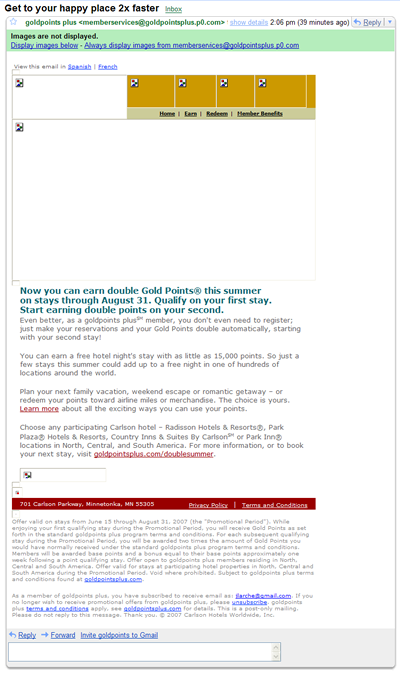I really like the direction that Kevin Hillstrom’s One Positive Day blogging concept is taking. While I used the occasion this month to share a favorite work tool, Kevin was inviting many of his social networking and database colleagues to speculate on how to improve the online presence of SUPERVALU, a grocery and pharmaceutical retail and supply chain company.
I’ve had the luxury of a week since that July 1 post to think about my response. I started with the question of corporate mission. There are many ways to drive consumers to your site, such as an online version of the old “Green Stamps” promotion, but as Kevin states at the end of his post, you ultimately have to show something beyond raw page views. You have to add to the stores’ bottom lines, either by saving money by automating something that is now labor-intensive, or generating greater sales totals, or both.
In the comments, Ron Shevlin and another contributor mentioned how helpful it would be to create an aisle-by-aisle shopping list of items. I can understand the logistical challenge of this, since every store floor plan seems to be at least a little different, something exacerbated by the thousands of new products introduced (and pulled!) every year. This last point was made another contributor to the dialog — 10-year food business veteran Harry Joiner.
A Store-generated Shopping List
I had even wondered if something could be done with a mobile-enabled service. For instance, from your cell phone, you call or text a list to a SUPERVALU short code. Then, either through voice recognition (in the case of a voice call) or standard database look-up, you get back a list in your email box, ordered in the walking pattern of the store and complete with related specials and exclusive couponing.
Perhaps something could even be done with a WiFi-enabled version of this voice-activated shopping list device. This device would take your family’s accumulated voice lists of groceries, digitize the list into text using its native voice-recognition system, and — after it is sent via a wireless internet connection to SUPERVALU computers — the device receives and prints the final list with coupons.
This certainly would align itself with SUPERVALU’s Mission Statement: “To serve our customers better than anyone else … provide our customers with value through our products and services, committing ourselves to providing the quality, variety and convenience they expect.” The mission statement goes on to talk about building strong communities surrounding its stores, which is the other theme of how to help this web site become a greater contributor to the store’s success.
Harry Joiner mentioned creating Ning-like online communities surrounding each of the most significant lifestyle and demographic categories. He gave some examples of how other product marketers have succeeded with this tactic.
A few community examples for SUPERVALU that spring to mind are the following: Young, growing families, single adults looking for tips on cooking for one (and perhaps even place-based events specifically for singles), and of course cooking enthusiasts.
Some value-creating tactics could be things like product-related cooking demonstrations or give-aways, or tie-ins with non-profits that the SUPERVALU business supports through its foundation. Only online community members would be privy to them, of course. One thing is clear. These communities would need to find a great deal of value on the sites.
Many companies have tried to build a critical mass among their “wired niches.” Most have failed.
And speaking of long tale strategies, here’s one that my friend Steve Ward had cooked up well over 10 years ago, and I think still has promise: An online database of all nutritional information for every product on the shelves (or as many as possible)!
Those who are striving to reduce their sodium or fat consumption, or improve their nutrient intake, could create shopping lists that tell them the exact nutritional values of what they eat.
Would this, or any of the above ideas, fundamentally change the way SUPERVALU returns shareholder value? No. Would it help the company fulfill its mission? Absolutely. But like so many online endeavors, this would be accomplished slowly and at a significant investment, one niche at a time.

